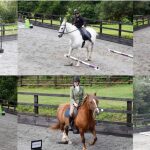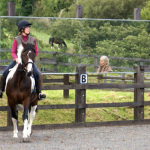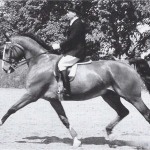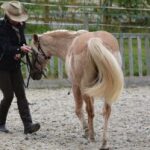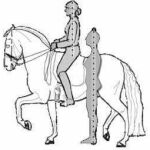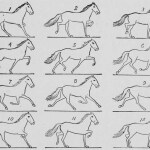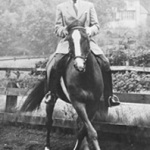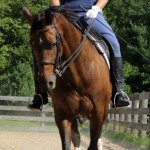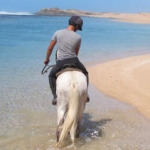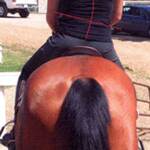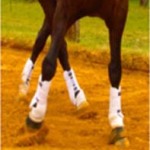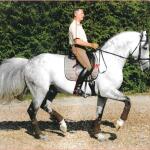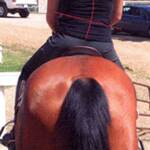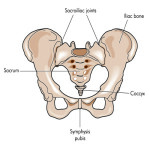Alignment & Posture (Horse)
One of the things I talk about at my clinics is how important awareness of our body’s posture is for both us and our horses. Whilst most people accept ...
Arena Hire
On specific weekends, the Arena will be available for hire individually, or for groups of up to 3 riders at a time. A Working Equitation course will be ...
Balance & the Aids
Does your horse fall in on a left circle and fall out on a circle to the right, or vice versa? Does he toss his head or try breaking into a canter when ...
Bending
The ability of a horse to bend depends on his suppleness and flexibility. Although we often think about a horse bending from poll to tail, this actually ...
Circles
Whether you compete at dressage, do just a little bit of schooling or are just happy hacking out – bending and circling are a great gymnastic exercise ...
Contact
The question of what contact is, how soft or firm the contact should be and whether one should always ride with contact or only use it sparingly is something ...
Contact & Rein Pressure
Contact is the third building block in the classic German Scales of Training pyramid following after Rhythm and Suppleness (sometimes shown as Relaxation). ...
Correcting Crookedness
I originally wrote this post in 2018 but it is as relevant now as it was then. As anyone who has followed my articles for any length of time or ...
Elbows
I recently read an article by Wendy Murdock about the rider’s elbows and was immediately struck by how few articles I have seen written about them recently. ...
Explaining the Half Halt
The half halt is something that virtually every one of us has been told to do, at one time or another, during a riding lesson. But from running my Posture ...
Feeling footfall
In this article I look at the importance of being able to feel our horse’s footfall and follow his natural rhythm with our body. We will start off looking ...
Forehand versus Engagement
In this article I thought we would have a look at on the forehand versus engagement. You might think “I’m not doing dressage, I’m only hacking, ...
Lessons
For more information about the lessons and classes available please click on one of the photos below. Horse Biomechanics Lessons Human Biomechanics Lessons ...
Pilates Exercises for Your Horse
By now we have all heard that Pilates is really good for us. When done regularly the benefits of Pilates are numerous, including strengthening our core ...
Posture & Balance
When I first started teaching Rider Biomechanics it was perfectly clear to me, standing and watching, whether a rider was sitting straight in their saddle, ...
Posture, Position and PI
As a Rider Biomechanics Coach, I know that the way a rider sits on her horse influences the way the horse moves. Obviously, there are lots of other reasons ...
Pull, Push or Pour? The hands.
I have just returned from a brilliant clinic given by Tom Nagel (author of Zen & Horseback Riding). During the clinic he asked us (his students) if ...
Relationship
It has been a couple of months since I last wrote my last article, as apart from being on holiday and spending spent some quality time with my own horses, ...
Rider Biomechanics
Rider Biomechanics Rider Biomechanics can be divided into 3 distinct components, the biomechanics of the human, the biomechanics of the horse and finally ...
Rider Position & Biomechanics
Rider Biomechanics is not just about sitting in a pretty position It is about understanding the forces put on your body by your horse’s movement and ...
Rising Trot
The trot is a two beat movement with the legs moving in diagonal pairs with a moment of suspension between each pair of legs touching the ground. The ...
Seat
So why is a correct and independent seat so important? As Bent Branderup wrote in his wonderful book The Academic Art of Riding, the seat is “the ...
Shoulder-In
In this article I thought I would take a look at the first of the lateral movements, shoulder-in. I hadn’t realised when I started the article, just ...
Side to Side Issues
We are all asymmetrical to a greater or lesser extent; we may have one ear lower than the other, carry one shoulder higher or have one hip further forward ...
The Aids
When and how we apply our aids can make a huge difference to the way our horse responds. Our aids should be virtually invisible, soft and subtle but all ...
The Importance of Footfall
Being able to feel the footfall of your horse and knowing at any given time where each of your horses legs are, is or should be, the foundation of good ...
The Importance of Lateral Movements
Many riders avoid doing any lateral movements with their horse. This can be because of fear of doing them wrong and "hurting" their horse, lack of knowledge ...
The Importance of our Hips
Our hips have a huge influence on our ability to ride well and the way our horse goes. Tight hips are a major cause of all sorts of problems, such as; ...
The Importance of Straightness
All horses and all humans are asymmetrical to a greater or lesser extent. The muscles on one side of the body are stronger than the other, one side may ...
The Importance of the Core
Whether we are talking about humans or horses a strong and supple core is required to support the spine and reduce wear and tear on the joints. For riders ...
The Importance of the Feet
So far in this series we have looked at "the importance of straightness" and "the importance of the hips". But just as you can’t build a house without ...
The Importance of the Seat
A good seat is an essential if we want to be a good rider. Every book and every trainer seems to agree on this. How a good seat can be achieved or what ...
The Knee
A correctly placed and aligned knee prevents knee injury, whether we are on or off our horse. While in the saddle, a correctly placed knee can be used ...
The Seat (or why does my horse veer to the left?)
Have you ever wondered why your horse veers to the left (or right) when you ride up a centre line in a dressage test or thought your horse was being naughty ...
The Shoulder
The shoulder is one of the most complex joints in the human body and as such is vulnerable to all sorts of problems and injuries. It is a relatively shallow ...
Transitions
To ride transitions well is probably one of the most important (and difficult) things one can learn as a rider. All too often the rider tips forward on ...
Travers
In this article I thought we would look at the second of the lateral movements – travers (also known as quarters-in, haunches-in or croup-in). As with ...
Troubleshooting – or listening to your horse
One of the biggest concerns many students seem to have after attending a lesson or a clinic, is how they can continue schooling by themselves. Of course, ...
Turn on the Forehand in Motion
The turn on the forehand in motion is one of the first lateral movements that you can teach your horse. The movement is not found in any dressage test, ...
Turn on the Haunches
When done properly the “Turn on the Haunches” or “Pirouette” is one of the most effective gymnastic exercises for your horse that you can do. ...
Uneven Pelvis
No one sits on a horse in perfect symmetry. Everyone favours one side over the other to varying degrees, ranging from nearly imperceptible in those who ...
Why worry about the rider?
Biomechanics is the study of the functioning of the body in movement using mechanical principles. It is highly relevant to riding because in riding the ...

